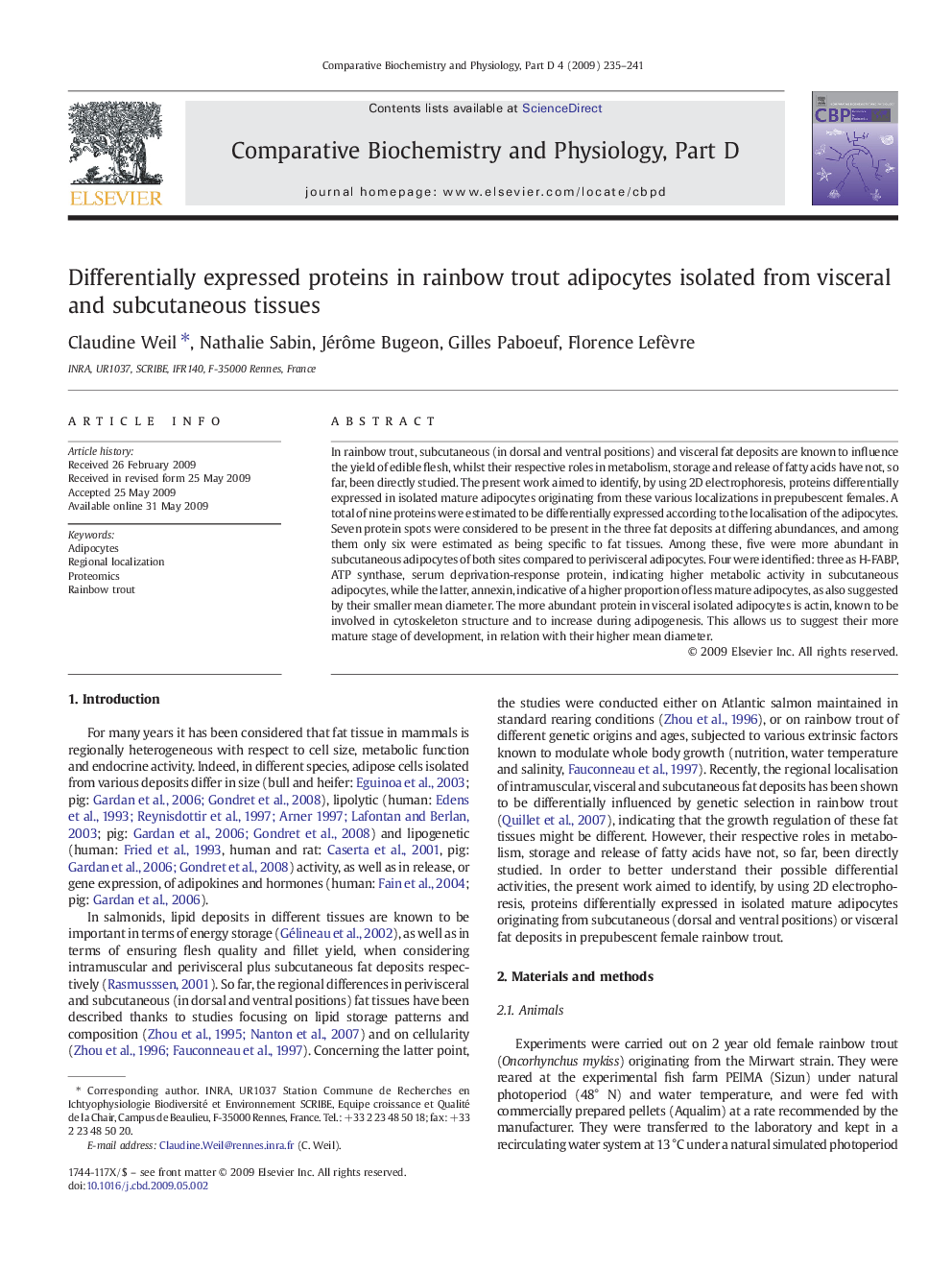| Article ID | Journal | Published Year | Pages | File Type |
|---|---|---|---|---|
| 1978916 | Comparative Biochemistry and Physiology Part D: Genomics and Proteomics | 2009 | 7 Pages |
In rainbow trout, subcutaneous (in dorsal and ventral positions) and visceral fat deposits are known to influence the yield of edible flesh, whilst their respective roles in metabolism, storage and release of fatty acids have not, so far, been directly studied. The present work aimed to identify, by using 2D electrophoresis, proteins differentially expressed in isolated mature adipocytes originating from these various localizations in prepubescent females. A total of nine proteins were estimated to be differentially expressed according to the localisation of the adipocytes. Seven protein spots were considered to be present in the three fat deposits at differing abundances, and among them only six were estimated as being specific to fat tissues. Among these, five were more abundant in subcutaneous adipocytes of both sites compared to perivisceral adipocytes. Four were identified: three as H-FABP, ATP synthase, serum deprivation-response protein, indicating higher metabolic activity in subcutaneous adipocytes, while the latter, annexin, indicative of a higher proportion of less mature adipocytes, as also suggested by their smaller mean diameter. The more abundant protein in visceral isolated adipocytes is actin, known to be involved in cytoskeleton structure and to increase during adipogenesis. This allows us to suggest their more mature stage of development, in relation with their higher mean diameter.
